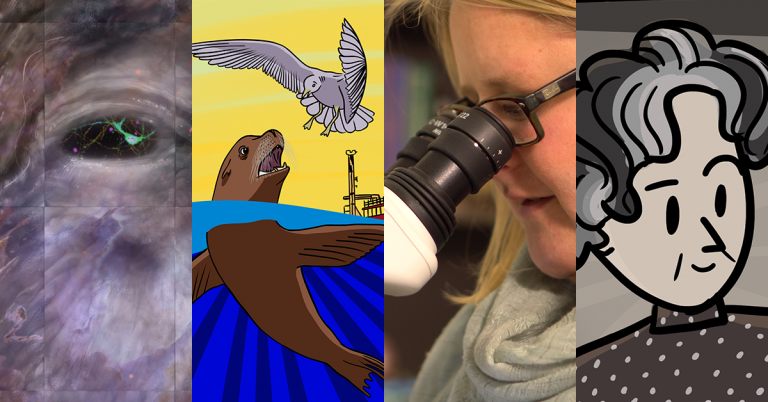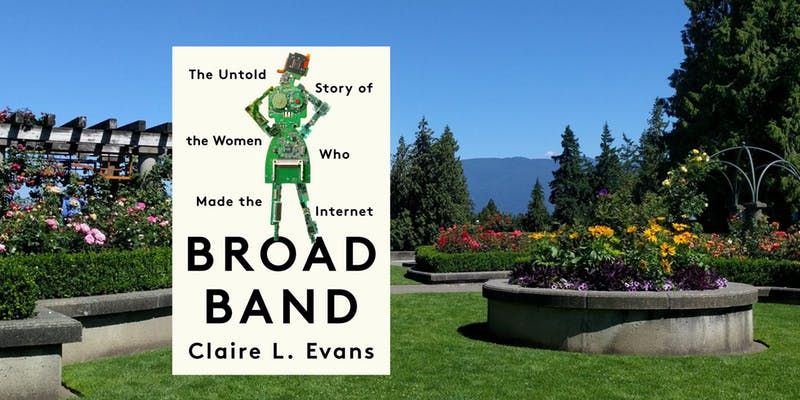Ms. Shetterly was at the University of Toronto (Hart House) as a mentor at Tundra Technical Solutions’ 2023 Launchpad event. The company is a ‘talent recruitment’ agency and this is part of their outreach/public relations programme. This undated video (runtime: 2 mins. 27 secs.) from a previous Hart House event gives you a pretty good idea of what this year’s Toronto event was like,
This November 9, 2023 Tundra Technical Solutions news release (on Cision) suggests that this is a US-based company while supplying more information about their 2023 STEM or Launchpad mentorship event at Hart House,
On the heels of [US] National STEM Day, a landmark event unfolds tonight to advance the role of women in Science, Technology, Engineering, and Mathematics (STEM). Tundra, a trailblazer championing diversity within the world’s most innovative industries, hosts its annual Launchpad Mentorship Event at the University of Toronto’s Hart House.
This event welcomes hundreds of high school female students across the GTA [Greater Toronto Area?] to inspire and empower them to consider careers in STEM.
The night opens with a fascinating keynote speech by Margot Lee Shetterly, acclaimed author of the #1 New York Times bestseller Hidden Figures. Margot will share her insights into the critical contributions of African-American women mathematicians at NASA, setting a powerful tone for the evening. The spotlight also shines brightly on Arushi Nath, a 14-year-old Canadian prodigy and Tundra Launchpad Mentee of the Year whose contributions to astronomy have propelled her onto the world stage.
The Launchpad Event panel discussion features an impressive lineup of leaders, with Anne Steptoe, VP of Infrastructure at Wealthsimple; Linda Siksna, SVP of Technology Ops and Platforms at Canadian Tire; Natasha Nelson, VP of Ecostruxure at Schneider Electric; and Allison Atkins, National Leader for Cloud Endpoint at Microsoft. Moderated by Marisa Sterling, Assistant Dean and Director of Diversity, Inclusion, and Professionalism at the University of Toronto, the panel tackles the challenges and opportunities within STEM fields, emphasizing the need for diversity and inclusion.
In a seamless transition from Shetterly’s keynote to the voices of present-day STEM leaders, the event spotlights the potential of young women in these fields. Arushi Nath [emphasis mine], the 9th-grade Canadian astronomy sensation, embodied this potential. Fresh from her success at the European Union Contest for Young Scientists, Arushi’s presence will be a vibrant reminder of what the next generation can achieve with support from initiatives like Tundra’s Launchpad Event.
Tundra’s commitment to nurturing and developing STEM leaders of tomorrow is evident through its substantial investments in youth. Every year, Tundra connects thousands of students who identify as female and non-binary with mentors, awarding scholarships and prize packs to help students excel in their future.
Tundra’s dedication to diversity and empowerment in STEM remains unwavering since the Launchpad’s inception in 2019. The event is a testament to the bright future that awaits when we invest in the mentorship and recognition of young talent.
Female-identifying or non-binary students in grades 10-12 can apply for Tundra’s next Launchpad Scholarship here [deadline: December 3, 2023].
…
You can find out more about the Tundra Technical Solutions STEM initiatives here. (I’m not sure why they’ve listed Vancouver as a location for the event on the STEM initiatives page since there is no mention of it in the news release or elsewhere on the page.)
Arushi Nath was last mentioned here in a November 17, 2023 posting where her wins at the 2023 Canada Wide Science awards and the 34th European Union Contest for Young Scientists (EUCYS) and her appearance at the 2023 Natural Sciences and Engineering Research Council of Canada (NSERC) Awards were highlighted.
I’m having trouble keeping with her!
She has written up an account of her experience at the 2023 Launchpad Mentorship event at Hart House in a November 18 (?), 2023 blog posting on the HotPopRobot website,
…
Almost 150 students from across Toronto and the region attended the event. In addition, around 20 mentors from several organizations gathered to interact with the students. Many staff members from Tundra were also present to support the event.
Keynote Speech: Science and Space is for All
The evening started with a keynote speech from Margot Lee Shetterly, the author of Hidden Figures book. Hidden Figures [movie] explores the biographies of three African-American women who worked as computers to solve problems for engineers and others at NASA.
In her speech, she talked about her journey writing the book and what drew her to the topic. The fact that one of the three women was her neighbour was a big inspiring force. She shared the background of these brilliant women mathematicians, their personal stories, anecdotes and the crucial roles they played during the Space Race.
Several questions were posed to her, including how she felt about having her book transformed into a movie before the book was even complete and how students could merge their other passions with science.
…
Prizes and Awards: Winning 2023 Mentee of the Year Award
…
At the end of the raffle, I was surprised to hear my name called on the stage. I was honoured to receive the 2023 Mentee of the Year Award. I thanked the organizers for this gesture and for organizing such a wonderful evening of fun, learning and networking.
…

More about Hidden Figures on FrogHeart
First mentioned here in a September 2, 2016 posting titled, “Movies and science, science, science (Part 1 of 2),” it focused heavily on Margot Lee Shetterly‘s 2016 nonfiction book, “Hidden Figures: The American Dream and the Untold Story of the Black Women Who Helped Win the Space Race.”
The movie focused primarily on three women but the book cast a wider net. It’s fascinating social history.
They were computers
These days we think of computers as pieces of technology but for a significant chunk of time, computers were people with skills in mathematics. Over time, computers were increasingly women because they worked harder and they worked for less money than men.
I have an embedded video trailer for the then upcoming movie and more about human computers in my September 2, 2016 posting.
There’s also something about the Hidden Figures script writing process in my February 6, 2017 posting; scroll down about 80% of the way. Sadly, I was not using subheads that day.
More Canadian STEM information
The government of Canada (Innovation, Science and Economic Development Canada) has a webpage devoted to STEM initiatives, their own and others,
…
Canada has emerged as a world leader in many science, technology, engineering and math (STEM) fields, and many new jobs and career opportunities that have emerged in recent years are STEM-related. As more and more businesses and organizations look to innovate, modernize and grow, the demand for people who can fill STEM-related jobs will only increase. Canada needs a workforce that can continue to meet the challenges of the future.
Additionally, young Canadians today need to think carefully and critically about science misinformation. Misinformation is not new, but the intensity and speed in which it has been spreading is both increasing and concerning, especially within the science realm. Science literacy encourages people to question, evaluate, and understand information. By equipping youth with science literacy skills, they will be better positioned to navigate online information and make better decisions based on understanding the difference between personal opinions and evidence-based conclusions.
The Government of Canada and its federal partners have put forward several new opportunities that are aimed at increasing science literacy and the participation of Canadians in STEM, including under-represented groups like women and Indigenous communities.
…
CanCode (Innovation, Science and Economic Develoment Canada)
CanCode is an Innovation, Science and Economic Development Canada (ISED) funding program that provides financial support for organizations to equip Canadian youth, including traditionally underrepresented groups, with the skills they need to be prepared for further studies. This includes advanced digital skills, like coding and STEM courses, leading to jobs of the future. For more information on the program and future Calls for Proposals, visit the CanCode webpage.
…
Citizen Science Portal (ISED)
The Citizen Science Portal provides information and access to science projects and science experiments happening in various communities for Canadians to participate in. Some may only be available at certain times of year or in certain areas, but with a little exploration, there are exciting ways to take part in science.
…
Objective: Moon – including Junior Astronauts (Canadian Space Agency)
The Canadian Space Agency (CSA) aims to engage young Canadians, to get them excited about STEM and future careers in the field of space through a suite of resources for youth and educators. The CSA also helps them understand how they can play a role in Canada’s mission to the Moon. As part of Canada’s participation in Lunar Gateway, the Objective: Moon portfolio of activities, including the Junior Astronauts campaign that ended in July 2021, makes learning science fun and engaging for youth in grades K – 12.
…
Actua
Actua is a Canadian charitable organization preparing youth, ages 6-26, to be the next generation of leaders and innovators. It engages youth in inclusive, hands-on STEM experiences that build critical employability skills and confidence. Through a national outreach team and a vast member network of universities and colleges, Actua reaches youth in every province and territory in Canada through summer camps, classroom workshops, clubs, teacher training, and community outreach activities.
…
Mitacs
Mitacs is a national not-for-profit organization that designs and delivers internships and training programs in Canada. Working with universities, companies and federal and provincial governments, Mitacs builds and maintains partnerships that support industrial and social innovation in Canada. More information on Mitacs’ programs can be found here.
…
Science fairs, STEM competitions and awards
The Government of Canada supports the discoveries and the ingenuity of tomorrow’s scientists, engineers and inventors.
Canada’s science fairs and STEM competitions
- Canada-Wide Science Fair
- Canadian Mathematical Society competitions
- Cyber Titan
- Défi génie inventif (link in French only)
- FIRST Robotics Canada
- Hydro-Québec Science Fair
- Little Inventors
- Prime Minister’s Science Fair
- Sanofi Biogenius Canada
- Science Exposed Image Contest
- STEAM Horizon Awards
The page has not been updated since August 13, 2021.
There are more organizations and STEM efforts (e.g. ScienceRendezvous [a national one day science fair], Beakerhead [a four day science fair held annually in Calgary, Alberta], the Perimeter Institute for Theoretical Physics [they also offer “Inside the Perimeter” with all kinds of resources online]) than are listed on the page, which is a good place to start, but keep on looking.
A reminder: Tundra Launchpad scholarship deadline
Female-identifying or non-binary students in grades 10-12 can apply for Tundra’s next Launchpad Scholarship here [deadline: December 3, 2023].

